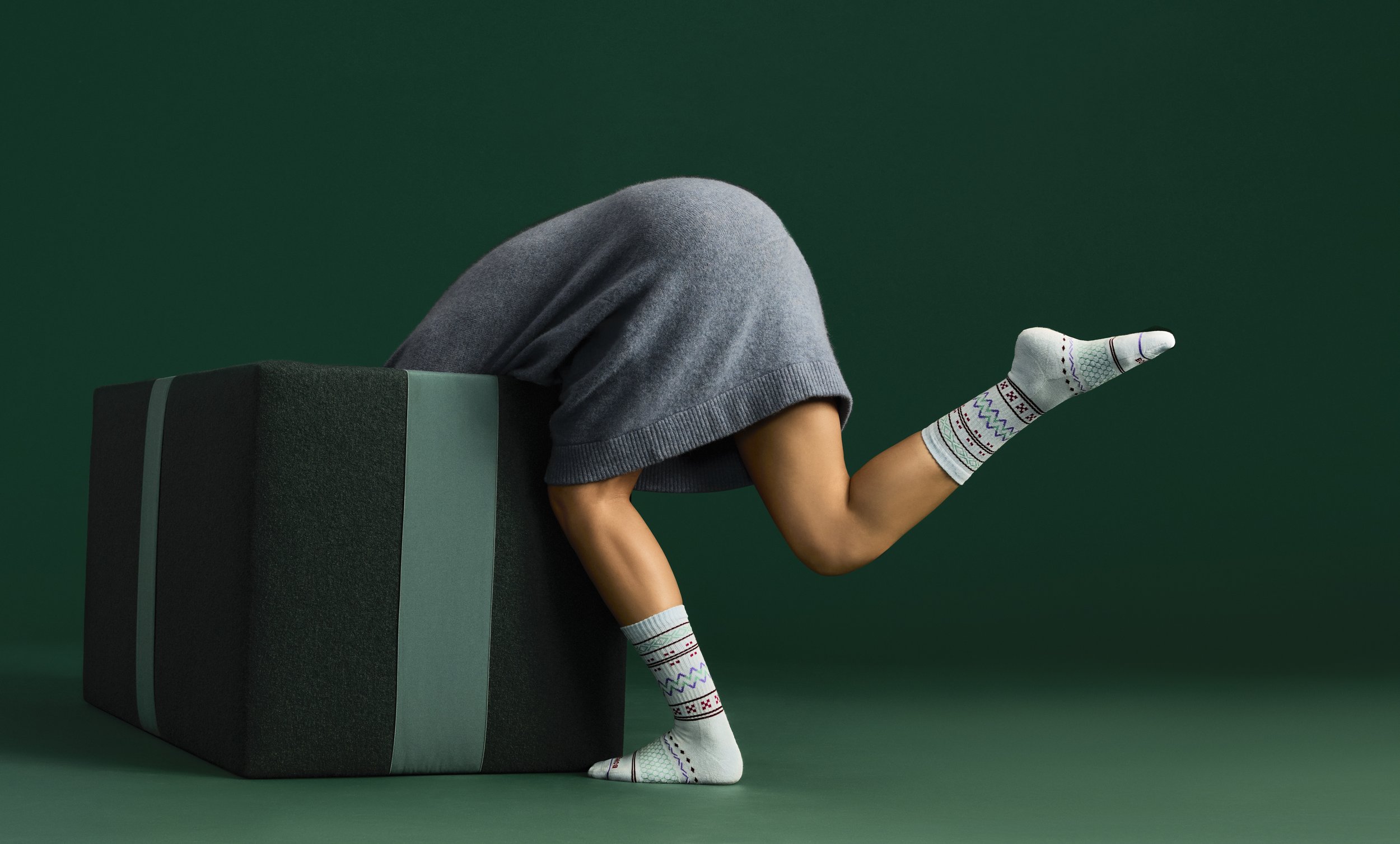CONQUERING HOMELESSNESS THROUGH SOCK SALES, BOMBAS IS MEASURING IMPACT ONE PAIR AT A TIME
By: Erica Commisso
Randy Goldberg helped build Bombas, one sock at a time, with a firm belief that the brand he co-founded could make a big impact. The concept, he says, is simple: for every one product purchased, Bombas donates one matching item to those experiencing housing insecurity.
It started with socks, Goldberg says because he once heard and couldn’t forget “socks are one of the most requested clothing items by organizations addressing homelessness. That fact just stuck with both me and my co-founders,” he says. “That became the foundation for Bombas. We thought, what if we could create a company where every purchase directly helped someone in need, and at the same time, make a better product for everyone? After a couple of years of research and development, we officially launched in 2013, in New York City.”
And now, in over a decade of operations, Bombas has grown not only in scale, but in offerings. The brand has donated over 150 million items to those experiencing housing insecurity, from socks to the newly launched underwear and t-shirts. The categories to expand into, Goldberg says, were also thoughtfully selected based on feedback from the organization the brand works with to donate, which Bombas has dubbed its giving partners.
Source: Bombas
“When we started talking with giving partners, we learned that basics, including underwear and t-shirts are so commonly requested. Those are things most people don’t think to donate, because you can’t donate them used,” Goldberg says. “Expanding into those categories allowed us to deepen our impact and on the product side, it was a natural extension of what we do best: making comfortable, durable, thoughtful basics.”
From a consumer perspective, Bombas’ ability to create comfortable and durable basics is essential to the brand’s success. Goldberg says that making the products themselves buyable and wearable for the consumer are vital in the brand’s ability to offer those experiencing housing insecurity the same luxuries of comfortable, durable clothing. “We knew in order to donate a lot of socks, we’d have to sell a lot. And in order to do that, we’d have to create something different than what was currently available - something that was more thoughtfully designed to be the most comfortable pair people had ever worn,” Goldberg says. Comfort is something everyone deserves, whether you’re a customer or someone receiving a donation.
“We obsessed over the details - think seamless toes, arch support, premium materials - because we wanted to make something that people would truly love to wear. That connection between quality and purpose is what keeps our mission sustainable. And we’ve carried that design philosophy forward to the other items we now make.”
Those other items include newly launched bralettes and underwear in different shapes, boxers, briefs, t-shirts and long-sleeved tees, and even slippers–things people can wear around the house or wear outside in every season. And, with this expansion on the books, Goldberg and his co-founders are already looking ahead.
Source: Bombas
Most of Bombas’ giving partners are based in the United States, and real stories of those who have benefitted from the donations can be found on the brand’s website, though Bombas has recently expanded into major Canadian cities like Vancouver, Montreal, and Toronto, But Goldberg says there’s a real possibility to take the initiative global, beyond the crisis-based work Bombas already does on an international scale. “We also work with several global organizations that distribute our donation products across the world, in areas that are experiencing a crisis or natural disaster,” he says.
But at the centre of it all, in the United States and beyond, from socks to t-shirts, is the ability to work with partners in the United States and beyond. “These partners know their communities best, and they help us get products directly to the people who need them most,” Goldberg says. We’re constantly in touch with them, listening to feedback and learning what works. It’s a very collaborative relationship rooted in trust and shared purpose.”


